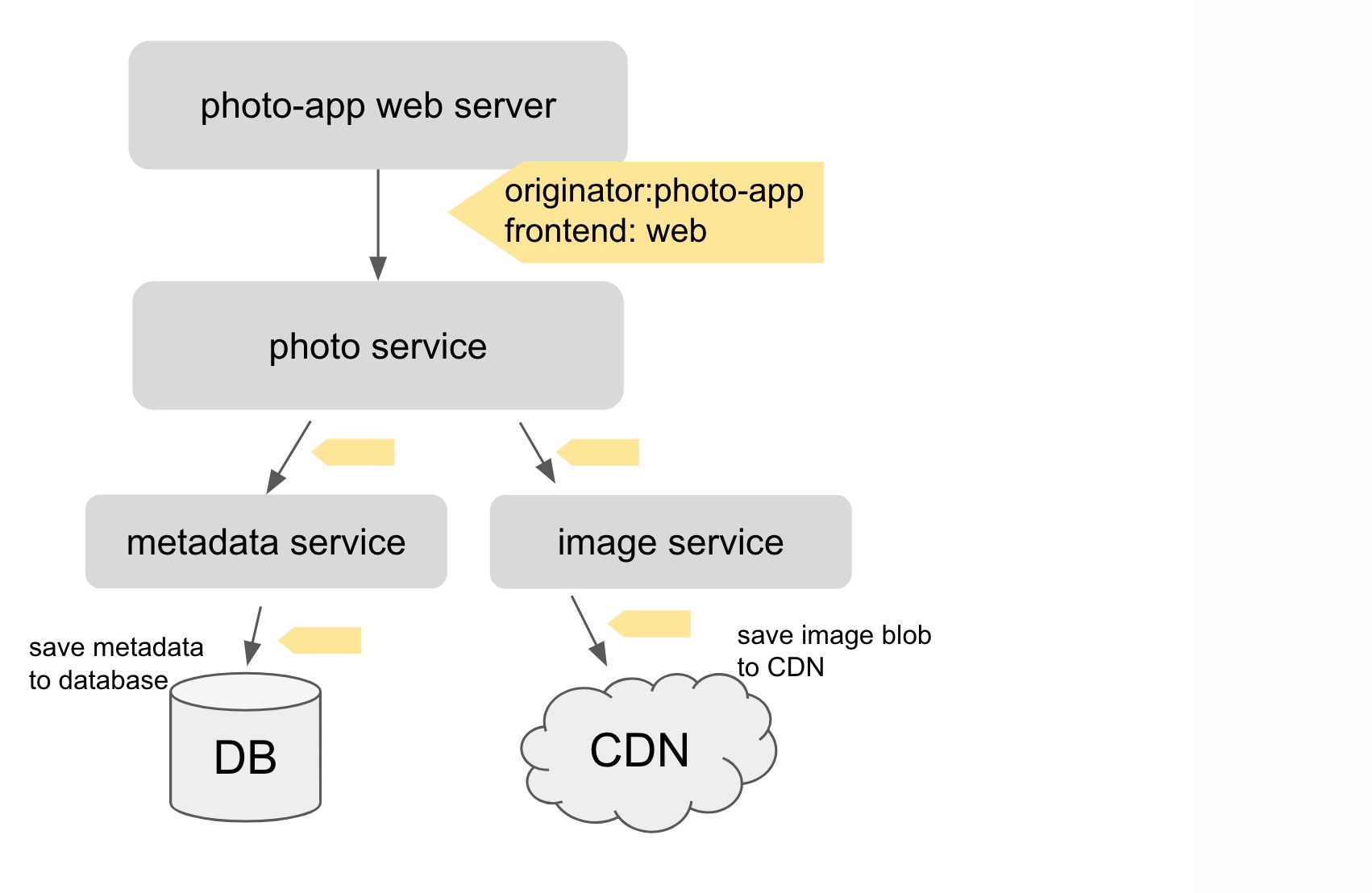Tags
Tags
Tags are key-value pairs of data associated with recorded measurements to provide contextual information, distinguish and group metrics during analysis and inspection.
When measurements are aggregated to become metrics, tags are used as the labels to breakdown the metrics.
Some examples of tags are:
frontend=mobilemethod="push"originator=photo_svc
Propagation
Tags can be defined in one service, then can be serialized into request headers and propagated as a part of a request to downstream services.
In distributed systems, a single request can touch a wide range of services. For example a file upload request can invoke the authentication, billing, data storage, and caching services.
To maintain contextual information of the specific request, tag propagation through your distributed system is necessary; the higher levels generate tags that are then passed down to the lower-level services. Data is collected with the tags and are sent to your observability systems.

Above, a request comes in to the Web server. Web server tags all the outgoing requests with the following tags.
originator=photo-appfrontend=web
These values are propagated all the way down to database and the CDN.
With these tags, you can uniquely identify and break down which service called the downstream services, how much quota they’ve been used, what calls are failing and more.
Makeup of a tag
A tag is defined by the following:
Tags vs Annotations
Tags are key-value used to filter and group metrics while annotations are used to give insight into an event in time for a span.
References
| Resource | URL |
|---|---|
| TagContext in OpenCensus specs | TagContext API |
| Go tag package | https://godoc.org/go.opencensus.io/tag |
| Java tags package | Tags API JavaDoc |
| Python tags package | Tags API implementation |
| C++ tags package | Tags API implementation |
